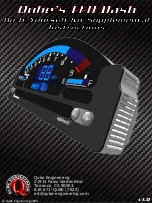
CONTINUED
During a frontal crash, your seat belt
restrains your lower body and torso,
and the front airbag helps protect
your head and chest.
Although both airbags normally
inflate within a split second of each
other, it is possible for only one
airbag to deploy.
This can happen if the severity of a
collision is at the margin, or
threshold, that determines whether
or not the airbags will deploy. In
such cases, the seat belt will provide
sufficient protection, and the
supplemental protection offered by
the airbag would be minimal.
If you ever have a moderate to
severe frontal collision, sensors will
detect the vehicle’s rapid
deceleration.
If the rate of deceleration is high
enough, the control unit will inflate
the driver’s and front passenger’s
airbags, at the time and with the
force needed.
Only the driver’s airbag can deploy if
there is no passenger in the front
seat, or if the advanced airbag
system has turned the passenger’s
airbag off (see page
).
An indicator on the instrument
panel that alerts you that the
passenger’s side airbag has been
turned off (see page
).
An indicator on the dashboard that
alerts you that the passenger’s
front airbag has been turned off
(see page
).
Emergency backup power in case
your vehicle’s electrical system is
disconnected in a crash.
An indicator on the instrument
panel that alerts you to a possible
problem with your airbag system
components (see page
).
25
29
30
30
Additional Information About Your Airbags
How Your Front Airbags Work
Dr
iv
er
and
P
asseng
er
Saf
e
ty
23
10/08/27 14:16:12 31TP6610_028
2011 Accord Crosstour
















































